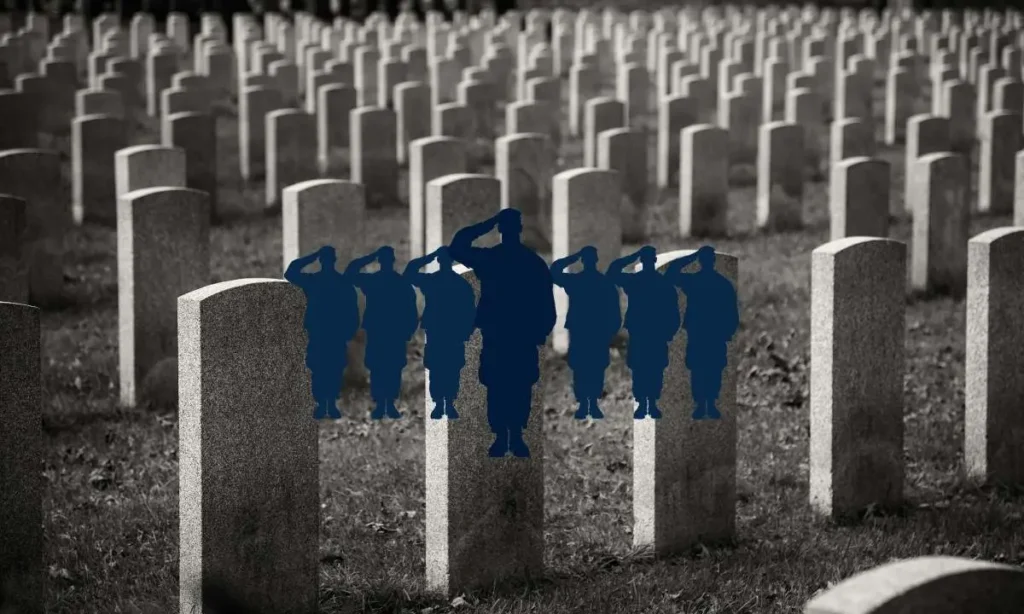Memorial Day 2025: What is the holiday honoring fallen soldiers? When is it?

Memorial Day is more than just a long weekend or the unofficial start of summer; it is a profound occasion that honors the ultimate sacrifice made by countless individuals who served in the U.S. Armed Forces. As we approach this solemn holiday in 2025, it's essential to understand its rich history and the significance it holds within American culture.
From community gatherings to national ceremonies, Memorial Day serves as a reminder to reflect on the bravery and dedication of those who have given their lives in service to their country. Let's delve into the details surrounding this important holiday, including its date in 2025, its historical origins, and how it differs from other military observances.
What is the date of Memorial Day in 2025?
In 2025, Memorial Day will be observed on Monday, May 26. This date is part of a longstanding tradition, as Memorial Day is celebrated on the last Monday in May, a designation made official by the Uniform Monday Holiday Act of 1968. This act aimed to provide more three-day weekends for the nation's workers by moving the holiday from its original date.
Historical origins of Memorial Day
The roots of Memorial Day can be traced back to the aftermath of the Civil War, with the first observance taking place on May 30, 1868. Originally known as Decoration Day, it was established to honor the Union soldiers who had died in the Civil War. The Grand Army of the Republic, an organization made up of Union veterans led by Major General John A. Logan, played a crucial role in its inception.
Logan's General Order No. 11 called for a nationwide day of remembrance, instructing communities to decorate the graves of fallen soldiers with flowers. This call to action underscored the importance of recognizing the sacrifices made by those who fought for the nation’s ideals. In fact, the order stated that the holiday was established "for the purpose of strewing with flowers or otherwise decorating the graves of comrades who died in defense of their country during the late rebellion."
While Decoration Day was initially focused on Civil War veterans, it later expanded to honor all American military personnel who have died in wars. Various accounts, including those from Boalsburg, Pennsylvania, highlight early observances where communities came together to decorate graves, illustrating the grassroots nature of the holiday's evolution.
Understanding the significance of Memorial Day
Memorial Day is not merely a day off work or a time for barbecues; it serves a profound purpose in American society. It is a day dedicated to the memory of those who made the ultimate sacrifice for their country. This observance plays a vital role in fostering a sense of national unity and remembrance.
- Ceremonies and Services: Many communities host memorial services, parades, and gatherings to honor fallen soldiers.
- Flag Etiquette: The tradition of flying the American flag at half-staff until noon is a poignant reminder of the lives lost.
- Visiting Cemeteries: Many Americans take the time to visit cemeteries, leaving flowers or flags on the graves of those who have served.
- Community Engagement: Memorial Day serves as an opportunity for communities to come together to remember and reflect.
As noted by scholar Robert N. Bellah, Memorial Day has become a pivotal part of America's "civil religion," emphasizing community, sacrifice, and the American vision. According to Bellah, this observance is a major event for towns and smaller cities, reinforcing the commitment to honor those who died for their country.
How does Memorial Day differ from Veterans Day?
While Memorial Day and Veterans Day both pay tribute to military personnel, they serve distinct purposes. Memorial Day is specifically dedicated to honoring those who have died while serving in the armed forces. In contrast, Veterans Day, celebrated on November 11, recognizes all individuals who have served, whether in peace or war, living or deceased.
This distinction is crucial as it highlights the different aspects of military service:
- Memorial Day: Focuses exclusively on fallen soldiers.
- Veterans Day: Celebrates the service of all veterans, emphasizing living individuals who have served.
- Armed Forces Day: Celebrated in May, it honors those currently serving in the military.
Understanding these differences allows for a more profound appreciation of the sacrifices made by military personnel and the various ways society honors them.
Key traditions associated with Memorial Day
As Memorial Day approaches, numerous traditions and practices emerge, reflecting the holiday's significance. Here are some widely recognized customs:
- Wearing Poppies: Inspired by the famous poem "In Flanders Fields," many people wear red poppies as a symbol of remembrance.
- National Moment of Remembrance: At 3 p.m. local time, Americans are encouraged to pause for a moment of silence to honor the fallen.
- Memorial Day Parades: Cities across the nation hold parades featuring veterans, active-duty military members, and community organizations.
- Decorating Graves: Many families take the time to visit cemeteries and place flags or flowers on the graves of loved ones who served.
Looking forward: Memorial Day 2025
As we prepare for Memorial Day in 2025, it is essential to carry forward the spirit of remembrance and gratitude. This holiday invites us to reflect on the sacrifices of those who have fought for freedom and to engage in acts of service and community solidarity.
Whether through attending local ceremonies, participating in parades, or simply taking a moment to remember, each person can contribute to the collective honoring of our fallen heroes. As we observe this day, let it serve as a reminder of the enduring spirit of sacrifice and the importance of unity in honoring those who have defended our nation.
Interesting Articles